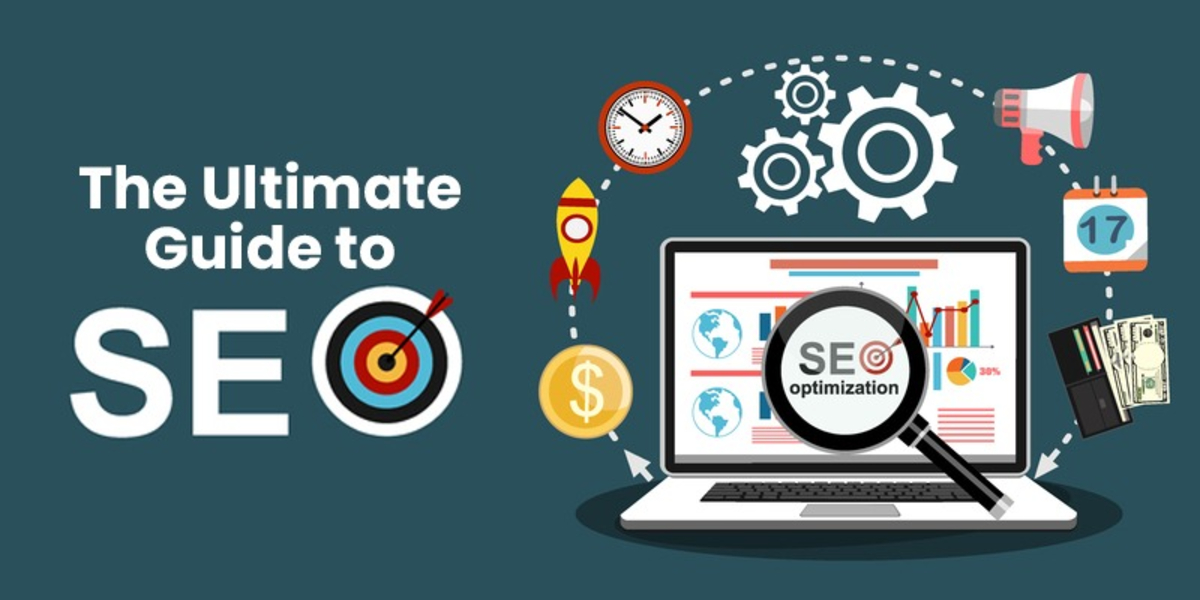How UX and SEO Collaborate in Web Development
SEO | 05-11-2025 | Nikhil Patel
.jpg)
With the digital age, it has become essential to know how UX and SEO are interdependent in website design to build effective online experiences. Though these practices were previously kept isolated, contemporary web development requires an integrated style of user experience and search engine optimization that cooperate to fulfill business objectives. Such synergy not only enhances search position but also maximizes user satisfaction, which results in improved conversion rates and sustained success.
What is the Connection Between UX and SEO?
The UX and SEO relationship is a symbiotic one in which both share the same ultimate aim of providing useful content to users in an efficient manner. While SEO aims for websites to be discoverable and crawlable within search engines, UX is responsible for ensuring that visitors enjoy a worthwhile and fulfilling experience once on the site. Search engines increasingly value user satisfaction signals, and thus, the merging of these two fields is inevitable and critical.
Core Web Vitals and User Experience Signals
Google's Core Web Vitals have profoundly transformed the way websites need to tackle performance optimization. These metrics are direct measures of user experience through loading performance, interactivity, and visual stability, building a measurable link between technical implementation and user satisfaction.
Key Performance Metrics
Largest Contentful Paint (LCP) measures loading performance and should occur within 2.5 seconds. This metric directly impacts both user satisfaction and search rankings, as slow-loading pages lead to higher bounce rates and decreased user trust.
Interaction to Next Paint (INP) has become the replacement for First Input Delay in March 2024, quantifying total page responsiveness across the entire page life cycle. Pages should respond to user interactions within 200 milliseconds to satisfy user expectations and avoid losing user attention.
Cumulative Layout Shift (CLS) avoids annoying visual instability that interrupts user action. A value less than 0.1 guarantees content does not involuntarily shift, upholding user trust and avoiding unwanted clicks on incorrect elements.
Web development teams that adopt Software Development Services need to now design systems with these metrics as fundamental requirements, not add-ons. This involves intense cooperation between UX designers, developers, and search performance specialists throughout the entire development cycle, with each decision taking into account both user experience and search performance consequences.
Mobile-First Design and Search Performance
Mobile-first design has gone from best practice to hard requirement in web development. Google's mobile-first indexing makes your mobile site the default version for ranking. This change requires more than responsive design—it calls for rethinking the whole user experience for mobile contexts. Touch targets should be sized correctly at least 48x48 pixels, content should be easily readable on small screens without horizontal scrolling, and essential content should be viewable above the fold without zoom or scroll behavior.
New Mobile Optimization Strategies
Progressive enhancement provides functionality on different network conditions, ranging from 5G to slower 3G connections. It begins with a simple, fast-loading experience and adds features dependent on device capabilities and connection speed.
Touch-optimized navigation patterns acknowledge that thumb reach areas are not like mouse precision. Bottom navigation bars, swipe gestures, and well-spaced interactive components build intuitive mobile experiences that diminish user frustration as well as enhance task completion rates.
In mobile development, UX and SEO integration go beyond technical execution to include content strategy. Mobile users may exhibit varying search intent and urgency from desktop users. Effective websites realize these contextually related differences and modify information architecture, content depth, and conversion flows accordingly.
Site Architecture That Works for Users and Search Engines
Successful site design creates the groundwork where UX and SEO share a natural synergy. Organized websites assist users in locating information instinctively while allowing search engines to perceive content relationships, significance, and topicality.
Information hierarchy must mirror user mental models and accommodate effective crawlability. Primary navigation has to achieve a balance between completeness and cognitive load—excessive alternatives overwhelm users and deplete link equity, but too few may conceal valuable content from both users and search engines. The classic three-click law has given way to a more subtle approach centered on information scent and user confidence along their path.
Strategic Architecture Implementation
Faceted navigation on e-commerce websites must be implemented with attention to avoid waste of crawl budget while keeping things usable. Canonical tags, noindex directives, and URL parameter management keep search engines focused on content-rich pages while users have the flexibility of filtering. Topic clusters build topical authority through grouping related content around pillar pages. This framework enables users to find complete information while conveying expertise to search engines through semantic connections and intentional internal linking.
URL designs must be readable, predictable, and scalable. Clean URLs such as "https://www.isyncevolution.com/services/ui-ux-design/" work better than versions that are based on parameters for users and search engines alike. This readability also translates to using proper canonical tags, addressing duplicate content concerns, and having consistent URL patterns that users can predict and understand.
Page Speed Optimization Strategies
Page speed has a material impact on user experience metrics, directly influencing search rankings. Speed's link to user behavior translates into quantifiable business impact—Amazon discovered that each 100ms of latency would cost them 1% in sales, which makes performance optimization worth heavy investment and focus.
Contemporary optimization goes beyond rudimentary techniques, demanding holistic strategies that take into account every detail of page delivery. Development teams need to deploy multi-layered strategies optimizing resources, code efficiency, and infrastructure simultaneously.
Resource Optimization Techniques
New image types such as WebP and AVIF save on file sizes by 30-50% from the usual JPEG without compromising on visual quality. Using responsive images with srcset means that users download the correct size of images for their device, avoiding the issue of mobile users downloading desktop images unnecessarily.
Lazy loading postpones resource loading until required, dramatically enhancing the initial page load performance. Above-the-fold content is rendered instantly by Critical CSS inlining without having to wait for external stylesheets, while non-critical CSS directly loads asynchronously to avoid render-blocking.
Code Efficiency and Next-Generation Development
Tree shaking eliminates unnecessary JavaScript from production bundles, which greatly reduces payload sizes greatly reduced. Code splitting makes users download only the JavaScript code required at their current page, with more code loading on demand while users browse.
Our Cloud Consulting Services assist companies in deploying scalable infrastructure that ensures even performance during peak traffic while maximizing cost optimization via smart resource allocation and caching techniques.
Content Strategy for UX and SEO Alignment
Content strategy is the most overt area of UX and SEO collaboration. High-quality content that properly supports user needs naturally does well in search rankings while establishing trust-inducing positive experiences, encouraging repeat visits.
Discovering search intent has grown beyond keyword matching into understanding the subtle needs behind the queries. Users who need fast answers need different content formats than users exploring deep content on a topic or comparing products prior to purchase decisions.
Content Formatting Best Practices
Good formatting enhances both readability and search effectiveness with clear structure and scannable layouts. Descriptive headings establish content hierarchy to assist users in navigation while delivering semantic clues to search engines regarding content relationships and relative importance.
Partitioning text into bite-sized 2-3 sentence chunks avoids wall-of-text fatigue without sacrificing storytelling pace. Purposeful deployment of bullet points, numbered lists, and tables provides information in user-scanning-pattern and featured snippet-friendly formats.
Decisions regarding content creation are informed by the E-E-A-T framework (Experience, Expertise, Authoritativeness, Trustworthiness). Proving actual expertise through thorough treatment, referencing authoritative sources, and factual accuracy establishes credibility with human readers and search engines alike.
Technical SEO Implementation in Modern Web Development
Technical SEO has evolved into a sophisticated discipline requiring deep integration with modern development practices. JavaScript frameworks enable rich user experiences but present unique SEO challenges requiring careful architectural consideration and implementation strategies.
Server-side rendering (SSR) and static site generation (SSG) strike a balance between performance and SEO demands. Next.js, Nuxt, and equivalent libraries give hybrid rendering alternatives, enabling developers to customize each page in accordance with particular needs while ensuring crawlability.
Advanced Technical Considerations
Use of structured data implementation through JSON-LD supports rich results and knowledge graph inclusion. Contemporary sites employ dynamic schema generation that responds to content updates to ensure markup stays accurate and complete.
Controlling crawl budget via strategic robots.txt management, XML sitemap optimization, and internal link distribution allows search engines to find and index high-value content in an efficient manner. Accurate redirect implementation maintains link equity during site relaunches or URL modifications.
JavaScript SEO involves making sure important content loads independently of client-side rendering requirements. Progressive enhancement techniques enable advanced interactions with the support of baseline capabilities for search engine crawlers.
Measuring Success: KPIs That Matter
Strong measurement demands the monitoring of metrics that indicate how UX and SEO collaborate to achieve business outcomes. Conventional vanity metrics need to become actionable indicators linking user activity with conversion goals and revenue generation.
Organic click-through rate indicates how engaging search listings appear to users, blending title tag optimization and meta description development. Increasing CTRs confirms successful alignment between user intent and content messaging.
Engagement rate quantifies significant interactions above mere pageviews, including scroll depth, time on page, and interaction events. These measurements indicate whether content meets user needs and keeps them engaged throughout the experience.
Task completion rate monitors if users accomplish their objectives, from locating information to completing a purchase. This measurement connects UX success with business goals, illustrating where friction points inhibit conversions.
Our Digital Transformation Consulting Services help businesses implement comprehensive measurement strategies that balance data collection with privacy requirements while providing actionable insights for continuous improvement.
Future Trends in UX and SEO Integration
A look ahead to 2025 and beyond sees some trends redefine the partnership between UX and SEO in web development. AI-based search experiences by Google's SGE and Bing's Copilot are revolutionizing the way people find and engage with content. These pieces of tech necessitate websites to organize content for both classic searches and AI-based responses.
Voice search optimization requires thinking differently about content structure for conversational searches and natural language usage. Featured snippets and zero-click searches necessitate content optimized for rapid consumption without sacrificing depth for users hungry for in-depth information.
Visual search functionality via Google Lens and other platforms opens discovery beyond text. Image optimization now includes visual similarity matching, object recognition, and contextual interpretation, demanding holistic visual content strategies.
Privacy-first experiences become mandatory as third-party cookies phase out completely. Websites must build first-party data strategies respecting user privacy while enabling personalization that enhances both user experience and search relevance.
Conclusion
The blending of UX and SEO efforts in website development has moved from a supplementary upgrade to an integral necessity for online success. Knowing this complementary relationship allows companies to build sites that rank high and deliver outstanding experiences that turn visitors into customers.
As search engines improve their ability to quantify user satisfaction with increasing sophistication through engagement and behavioral signals, the two fields converge even more. Sites that effectively blend technical optimization and true value creation for users will rule search results and market share.
The future involves dismantling organizational silos between marketing, development, and design teams. The use of thorough measurement strategies that measure both user experience and search performance guarantees relentless optimization based on data-driven insights instead of assumptions.
UX and SEO are today's website development requirements for being treated as a symbiotic part of an integrated strategy, not competing priorities. This integrated strategy develops lasting competitive advantages through the creation of experiences people adore and search engines celebrate.
Ready to reboot your website with UX and SEO concepts in sync that deliver tangible results? [Schedule a Consultation] with our team of experts to learn how we can assist you in creating a website that ranks better, converts higher, and provides superior user experiences.
FAQs
How Do Core Web Vitals Impact SEO Rankings?
Core Web Vitals are validated ranking signals in the Google algorithm. Sites with all thresholds passed have ranking rewards, whereas bad scores will harm visibility and can prevent pages from showing up in Top Stories and other SERP features.
What's the Most Important Factor When Balancing UX and SEO?
User intent alignment drives all optimization choices. Developing experiences that truly benefit user needs and deliver clear, accessible content naturally meet both user and search engine expectations.
How Frequently Should Websites Audit UX and SEO Performance?
Perform in-depth quarterly audits of technical SEO, content quality, and user experience metrics. Track key performance indicators monthly to catch problems early and measure improvement efforts.
Will JavaScript-heavy sites rank High in Search Engines?
Yes, JavaScript sites can be well-ranked using server-side rendering, static generation, or dynamic rendering to load important content without client-side JavaScript rendering.
Does Mobile Experience Impact Desktop Search Rankings?
Yes, Google has employed mobile-first indexing since 2023, and your mobile site controls rankings for both mobile and desktop search, regardless of the search device.

.jpg)
.jpg)
.jpg)


.jpg)

.jpg)
